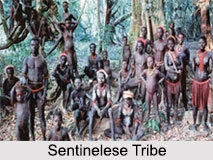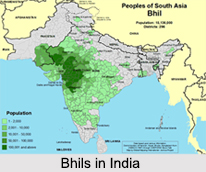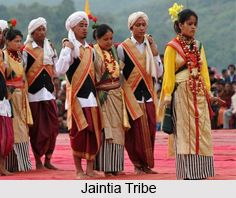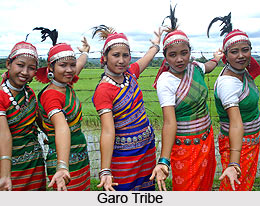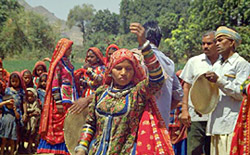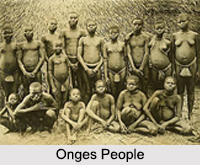 Onges are the original tribes of Andaman who live in the southernmost island of the Andaman. They are the representatives of one of the oldest human groups on the earth surface. They are the lineage of such ancestors who were once the denizens of the Stone Age. In certain ways the Onges are similar to the Andamanese in appearance.
Onges are the original tribes of Andaman who live in the southernmost island of the Andaman. They are the representatives of one of the oldest human groups on the earth surface. They are the lineage of such ancestors who were once the denizens of the Stone Age. In certain ways the Onges are similar to the Andamanese in appearance.
Features of Onges Tribe
Onges are dwarfish in size, but their torsos are perfectly proportioned with well developed muscles. With short and big face they have round heads with the broad nose with the thick and often averted lips. Their skin carries a dark complexion and has woolly and dark brown hair. Their eyes have brown shade with very little hair on their faces. A peculiar feature of the Onge women is the "steatopygia", the very developed buttocks.
Habitation of Onges
The Onges reside in circular hemispherical huts thatched with mats of palm leaves. "Korale" is a transitory shelter used in emergency during their roaming. The "hera" houses 10 to 15 families and the beds are arranged around the central platform. Wooden logs are used as pillows. All members of a family share the same bed, which is a wooden platform. The central fire is also used for community cooking during rains otherwise routine cooking is done in the open. The Onges, like the rest of the aborigines in these islands, have no concept of hygiene. They seldom wash or take bath, but are often drenched by the water dripping from every leaf when they are out in the forests. When the Onges move during dry season, they take all their belongings including their pet dogs with them. They as a part of personal decoration also paint their bodies with ochre. Once hostile, they have now become quite friendly and often visit Port Blair. As a part of the Government`s tribal policy in these islands, gifts like tea, tobacco, knives and other sundry articles are given to them during their visit to Port Blair. This policy in fact is the extension of appeasement policy adopted by the British.
A unique but interesting tradition is followed by these people while greeting their near and dear ones. The host sits on the floor and the guest sits in his lap. Thereafter they hug each other without uttering any word sometimes for 15 to 20 minutes; longer the separation, the longer the time taken for embracing each other. The Onges live mainly on the natural products offered by sea and forests. Hence they are till today living by gathering and hunting and are totally unaware about agriculture. Jack- fruit, Yams and fruits are obtained from jungles. They catch molluses, lobsters, crayfish, crustacean, crabs and cicada from the sea by harpooning. Hunting a giant turtle is a major delightful game for them. They normally roast the entire turtle or cut it alive and boil it in water. They are fond of pork and hunt wild pigs with the help of their pet dogs. They are voracious eaters and once face to face with food they become impatient and eat while cooking the food till they have eaten to their fill.
Like the Andamanese, they do not know the use of salt and sugar, but they too love and eat honey in plenty. To gather honey and avoid bee stings they chew "tonjohe" leaves, supposedly narcotic, and blow their moist breath over the beehives for drugging the bees. The bees become numb and lose consciousness for some time. For further protection they would smear their bodies with a paste made of the chewed leaves. The Onge men usually wear nothing but the tree-bark made rope and belt around their waist. This arrangement was also made to carry the primitive knife on their person. Women have been using belts of Pandanu leaves or bark- fibre threads. The Onges are very fond of decorating their bodies as well as faces. Red clay mixed with water, saliva and turtle fat is turned into paste for this purpose. The women of the family play the role of decorators. After painting all other members, they paint their own bodies. Besides improving physical appearance, the painting is believed to contain medicinal value also. During illness the aching parts of the body are painted to get relief. During the so called wedding ceremony, the bridegroom and the bride paint the bodies of each other. An Onge young man is supposed to search a life partner himself. Although there is no bar on free mixing of young boys and girls, yet after marriage no infidelity can be tolerated.
Among the Onges, important event is the girl`s entering the phase of puberty which commences with the first menstrual discharge. When the girl breaks the news of her first menstrual discharge, her parents weep over the incidence. Thereafter, she is taken to the sea for a couple of hours. Pandenu leaf strips are wrapped round her waist, wrists and arm muscles. She is not supposed to speak or sleep for 24 hours. All her needs are attended to by her parents. She leaves the hut daily in the morning and goes to the sea for a bath. After the menstrual period is over, she resumes her routine.
The Onges are the best canoe builders in the Andaman group of islands. The canoes are made of the hollowed tree trunks. Apart from meeting their own demand, they also cater to the demands of some of the Andamanese. These people also prepare their own bows and arrows. Bows are made from the trunk of a living tree while its string is prepared out of the rope made of tree bark. Bamboos are normally used for making arrows. The Onges are very fond of dancing and singing. They generally perform two types of dances. One is like the athletic event of hop, step and jump accompanied by movements of the head, arms and legs. In the other dance the body with legs apart is kept in almost stationary position and gentle wave like movements are made. This dance is accompanied by singing and is rated as a serious and sober performance. They do not play upon any musical instrument. Nonetheless, thumping of floor and striking of palms against arm muscles provide rhythmic beats.
The women in Onge society are accorded a high reputation. Even an indecent remark is sure to invite death of the related man. Once, it is said, a Burmese diver passed an indecent remark on an Onge lady, and in no time he was hacked to death by the Onge men. Real sisters and cousins (daughters of uncle and maternal uncle) fall outside the permitted matrimonial relations. The Onges are fortunately relatively immune to malaria. However, they fall prey easily to bronchitis, goitre, hookworms, ringworms and microfilarias. As a result of these diseases, the fertility rate among the Onges has been adversely affected. The child mortality rate has also gone up due to same causes. Thus the numbers of the Onges are falling. Less nomadic, increasingly dependent, they apathetically see their domain dwindling in the face of accelerated settlement, leaving the survival of their culture in doubt.

















